-
EXECUTIVE SUMMARY 22
-
MARKET INTRODUCTION 24
-
DEFINITION 24
-
SCOPE OF THE STUDY 24
-
RESEARCH OBJECTIVE 24
-
MARKET STRUCTURE 25
-
RESEARCH METHODOLOGY 26
-
OVERVIEW 26
-
DATA FLOW 28
- DATA MINING PROCESS 28
-
PURCHASED DATABASE: 29
-
SECONDARY SOURCES: 30
- SECONDARY RESEARCH DATA FLOW: 31
-
PRIMARY RESEARCH: 32
- PRIMARY RESEARCH DATA FLOW: 33
- PRIMARY RESEARCH: NUMBER OF INTERVIEWS CONDUCTED 34
- PRIMARY RESEARCH: REGIONAL COVERAGE 34
-
APPROACHES FOR MARKET SIZE ESTIMATION: 35
- REVENUE ANALYSIS APPROACH 35
-
DATA FORECASTING 36
- DATA FORECASTING TECHNIQUE 36
-
DATA MODELING 37
- MICROECONOMIC FACTOR ANALYSIS: 37
- DATA MODELING: 38
-
TEAMS AND ANALYST CONTRIBUTION 40
-
MARKET DYNAMICS 41
-
INTRODUCTION 41
-
DRIVERS 41
- HIGH DEMAND FOR MEDICAL DEVICE TO SUPPORT MARKET GROWTH 41
- SURGING DEMAND FOR TEMPERATURE CONTROL SOLUTIONS 42
- GROWING APPLICATIONS ACROSS FOOD AND BEVERAGE INDUSTRY 42
-
RESTRAINTS 43
- LAGGING CAPACITY TO WITHSTAND LARGE MOMENTARY OVERLOAD 43
- GOVERNMENT STANDARDS AND REGULATORY NORMS TO AFFECT GROWTH 43
- HIGH COSTS OF SOLID-STATE RELAY 44
-
OPPORTUNITY 45
- INTRODUCTION OF SMART SSR TO PULLULATE MARKET GROWTH 45
- GROWING DEMAND FROM CONSUMER ELECTRONICS 45
-
TREND 46
- TECHNOLOGY ADVACENMENT AND RELATED INFRASTRUCTURE DEVELOPMENT 46
-
COVID-19 IMPACT ANALYSIS 47
-
MARKET FACTOR ANALYSIS 50
-
VALUE CHAIN ANALYSIS 50
- RAW MATERIAL SUPPLIERS 51
- MANUFACTURERS 51
- DISTRIBUTORS 51
- END USERS 51
-
PORTER''S FIVE FORCES MODEL 52
- THREAT OF NEW ENTRANTS 52
- BARGAINING POWER OF SUPPLIERS 53
- THREAT OF SUBSTITUTES 53
- BARGAINING POWER OF BUYERS 53
- INTENSITY OF RIVALRY 53
-
MARKET SWOT ANALYSIS 54
-
MARKET PESTEL ANALYSIS 54
- POLITICAL 54
- ECONOMIC 55
- SOCIAL 56
- TECHNOLOGICAL 56
- ENVIRONMENTAL 57
- LEGAL 57
-
GLOBAL SOLID STATE RELAY MARKET, BY TYPE 59
-
OVERVIEW 59
-
DC TO AC 61
-
DC TO DC 61
-
AC TO DC 61
-
AC/DC TO AC 61
-
GLOBAL SOLID STATE RELAY MARKET, BY MOUNTING 62
-
INTRODUCTION 62
-
PANEL MOUNT 63
-
PCB MOUNT 63
-
DIN RAIL MOUNT 64
-
OTHERS 64
-
GLOBAL SOLID STATE RELAY MARKET, BY OUTPUT VOLTAGE 65
-
INTRODUCTION 65
-
DC SOLID STATE RELAY 66
- CONSTANT CURRENT 66
- RESISTIVE CURRENT 67
-
AC SOLID STATE RELAY 67
- SINGLE PHASE 67
- THREE-PHASE 67
-
GLOBAL SOLID STATE RELAY MARKET, BY CURRENT RATING 68
-
INTRODUCTION 68
-
LOW (0-20A) 69
-
MEDIUM (20A-50A) 69
-
HIGH (50A AND ABOVE) 69
-
GLOBAL SOLID STATE RELAY MARKET, BY APPLICATION 70
-
INTRODUCTION 70
-
INDUSTRIAL AUTOMATION 72
-
BUILDING EQUIPMENT 72
-
ENERGY & POWER 72
-
AUTOMOTIVE & TRANSPORTATION 72
-
FOOD & BEVERAGE 73
-
MILITARY & DEFENSE 73
-
OTHERS 73
-
GLOBAL SOLID STATE RELAY MARKET, BY REGION 74
-
OVERVIEW 74
- GLOBAL SOLID STATE RELAY MARKET, BY REGION, 2024 & 2032 (USD MILLION) 75
- GLOBAL SOLID STATE RELAY MARKET, BY REGION, 2024–2032 (000’ UNITS) 75
-
NORTH AMERICA 76
- US 79
- CANADA 81
- MEXICO 82
-
EUROPE 85
- GERMANY 89
- UK 90
- FRANCE 92
- ITALY 94
- SPAIN 95
- REST OF EUROPE 97
-
ASIA-PACIFIC 99
- CHINA 102
- INDIA 104
- JAPAN 105
- SOUTH KOREA 107
- REST OF APAC 109
-
MIDDLE EAST & AFRICA 111
- SAUDI ARABIA 114
- UAE 116
- SOUTH AFRICA 117
- REST OF MEA 119
-
SOUTH AMERICA 121
- BRAZIL 124
- ARGENTINA 126
- REST OF SOUTH AMERICA 127
-
COMPETITIVE LANDSCAPE 130
-
INTRODUCTION 130
-
MARKET SHARE ANALYSIS, 2022 130
-
COMPETITOR DASHBOARD 131
-
KEY DEVELOPMENTS & GROWTH STRATEGIES 132
- PRODUCT LAUNCH/PRODUCT APPROVAL/PRODUCT DEVELOPMET 132
- MERGER AND ACQUISITION 133
- PARTNERSHIP/INVESTMENT 133
-
COMPANY PROFILE 134
-
HONEYWELL INTERNATIONAL INC. 134
- COMPANY OVERVIEW 134
- FINANCIAL OVERVIEW 135
- PRODUCTS OFFERED 136
- KEY DEVELOPMENTS 137
- SWOT ANALYSIS 137
- KEY CUSTOMERS 137
- KEY STRATEGIES 138
-
TEXAS INSTRUMENTS 139
- COMPANY OVERVIEW 139
- FINANCIAL OVERVIEW 140
- PRODUCTS OFFERED 141
- KEY DEVELOPMENTS 141
- SWOT ANALYSIS 142
- KEY CUSTOMERS 142
- KEY STRATEGIES 142
-
STMICROELECTRONICS 143
- COMPANY OVERVIEW 143
- FINANCIAL OVERVIEW 144
- PRODUCTS OFFERED 144
- KEY DEVELOPMENTS 146
- SWOT ANALYSIS 146
- KEY CUSTOMERS 147
- KEY STRATEGIES 147
-
ABB LTD. 148
- COMPANY OVERVIEW 148
- FINANCIAL OVERVIEW 149
- PRODUCTS OFFERED 149
- KEY DEVELOPMENTS 150
- SWOT ANALYSIS 151
- KEY STRATEGIES 151
-
ROCKWELL AUTOMATION INC. 152
- COMPANY OVERVIEW 152
- FINANCIAL OVERVIEW 153
- PRODUCTS OFFERED 153
- KEY DEVELOPMENTS 155
- SWOT ANALYSIS 155
- KEY STRATEGIES 156
-
GENERAL ELECTRIC 157
- COMPANY OVERVIEW 157
- FINANCIAL OVERVIEW 158
- PRODUCTS OFFERED 158
- KEY DEVELOPMENTS 159
- KEY STRATEGIES 159
-
OMRON CORPORATION 160
- COMPANY OVERVIEW 160
- FINANCIAL OVERVIEW 161
- PRODUCTS OFFERED 162
- KEY DEVELOPMENTS 163
- SWOT ANALYSIS 163
- KEY STRATEGIES 164
-
FUJITSU LIMITED 165
- COMPANY OVERVIEW 165
- FINANCIAL OVERVIEW 166
- PRODUCTS OFFERED 167
- KEY DEVELOPMENTS 167
- SWOT ANALYSIS 168
- KEY STRATEGIES 168
-
VISHAY INTERTECHNOLOGY (SILICONIX) 169
- COMPANY OVERVIEW 169
- FINANCIAL OVERVIEW 170
- PRODUCTS OFFERED 171
- KEY DEVELOPMENTS 171
- SWOT ANALYSIS 172
- KEY STRATEGIES 172
-
CARLO GAVAZZI HOLDING AG 173
- COMPANY OVERVIEW 173
- FINANCIAL OVERVIEW 174
- PRODUCTS OFFERED 175
- KEY DEVELOPMENTS 176
- SWOT ANALYSIS 177
- KEY STRATEGIES 177
-
IXYS CORP. (LITTELFUSE) 178
- COMPANY OVERVIEW 178
- FINANCIAL OVERVIEW 179
- PRODUCTS OFFERED 180
- KEY DEVELOPMENTS 181
- SWOT ANALYSIS 182
- KEY CUSTOMER 182
- KEY STRATEGIES 182
-
SCHNEIDER ELECTRIC 183
- COMPANY OVERVIEW 183
- FINANCIAL OVERVIEW 184
- PRODUCTS OFFERED 185
- KEY DEVELOPMENTS 186
- SWOT ANALYSIS 186
- KEY CUSTOMERS 187
- KEY STRATEGIES 187
-
CRYDOM INC. (SENSATA TECHNOLOGIES, INC.) 188
- COMPANY OVERVIEW 188
- FINANCIAL OVERVIEW 189
- PRODUCTS OFFERED 189
- KEY DEVELOPMENTS 191
- SWOT ANALYSIS 192
- KEY STRATEGIES 192
-
-
LIST OF TABLES
-
QFD MODELING FOR MARKET SHARE ASSESSMENT 38
-
GLOBAL SOLID STATE RELAY MARKET, BY TYPE, 2024-2032 (USD MILLION) 60
-
GLOBAL SOLID STATE RELAY MARKET, BY MOUNTING, 2024-2032 (USD MILLION) 63
-
GLOBAL SOLID STATE RELAY MARKET, BY OUTPUT VOLTAGE, 2024-2032 (USD MILLION) 66
-
GLOBAL SOLID STATE RELAY MARKET, BY CURRENT RATING, 2024-2032 (USD MILLION) 69
-
GLOBAL SOLID STATE RELAY MARKET, BY APPLICATION, 2024-2032 (USD MILLION) 71
-
GLOBAL SOLID STATE RELAY MARKET, BY REGION, 2024–2032 (USD MILLION) 75
-
NORTH AMERICA: SOLID STATE RELAY MARKET, BY COUNTRY, 2024-2032 (USD MILLION) 77
-
NORTH AMERICA SOLID STATE RELAY MARKET, BY TYPE, 2024-2032 (USD MILLION) 77
-
NORTH AMERICA SOLID STATE RELAY MARKET, BY MOUNTING, 2024-2032 (USD MILLION) 78
-
NORTH AMERICA SOLID STATE RELAY MARKET, BY OUTPUT VOLTAGE, 2024-2032 (USD MILLION) 78
-
NORTH AMERICA SOLID STATE RELAY MARKET, BY CURRENT RATING, 2024-2032 (USD MILLION) 78
-
NORTH AMERICA SOLID STATE RELAY MARKET, BY APPLICATION, 2024-2032 (USD MILLION) 79
-
US SOLID STATE RELAY MARKET, BY TYPE, 2024-2032 (USD MILLION) 79
-
US SOLID STATE RELAY MARKET, BY MOUNTING, 2024-2032 (USD MILLION) 79
-
US SOLID STATE RELAY MARKET, BY OUTPUT VOLTAGE, 2024-2032 (USD MILLION) 80
-
US SOLID STATE RELAY MARKET, BY CURRENT RATING, 2024-2032 (USD MILLION) 80
-
US SOLID STATE RELAY MARKET, BY APPLICATION, 2024-2032 (USD MILLION) 80
-
CANADA SOLID STATE RELAY MARKET, BY TYPE, 2024-2032 (USD MILLION) 81
-
CANADA SOLID STATE RELAY MARKET, BY MOUNTING, 2024-2032 (USD MILLION) 81
-
CANADA SOLID STATE RELAY MARKET, BY OUTPUT VOLTAGE, 2024-2032 (USD MILLION) 81
-
CANADA SOLID STATE RELAY MARKET, BY CURRENT RATING, 2024-2032 (USD MILLION) 82
-
CANADA SOLID STATE RELAY MARKET, BY APPLICATION, 2024-2032 (USD MILLION) 82
-
MEXICO SOLID STATE RELAY MARKET, BY TYPE, 2024-2032 (USD MILLION) 82
-
MEXICO SOLID STATE RELAY MARKET, BY MOUNTING, 2024-2032 (USD MILLION) 83
-
MEXICO SOLID STATE RELAY MARKET, BY OUTPUT VOLTAGE, 2024-2032 (USD MILLION) 83
-
MEXICO SOLID STATE RELAY MARKET, BY CURRENT RATING, 2024-2032 (USD MILLION) 83
-
MEXICO SOLID STATE RELAY MARKET, BY APPLICATION, 2024-2032 (USD MILLION) 84
-
EUROPE: SOLID STATE RELAY MARKET, BY COUNTRY, 2024-2032 (USD MILLION) 87
-
EUROPE SOLID STATE RELAY MARKET, BY TYPE, 2024-2032 (USD MILLION) 87
-
EUROPE SOLID STATE RELAY MARKET, BY MOUNTING, 2024-2032 (USD MILLION) 87
-
EUROPE SOLID STATE RELAY MARKET, BY OUTPUT VOLTAGE, 2024-2032 (USD MILLION) 88
-
EUROPE SOLID STATE RELAY MARKET, BY CURRENT RATING, 2024-2032 (USD MILLION) 88
-
EUROPE SOLID STATE RELAY MARKET, BY APPLICATION, 2024-2032 (USD MILLION) 88
-
GERMANY SOLID STATE RELAY MARKET, BY TYPE, 2024-2032 (USD MILLION) 89
-
GERMANY SOLID STATE RELAY MARKET, BY MOUNTING, 2024-2032 (USD MILLION) 89
-
GERMANY SOLID STATE RELAY MARKET, BY OUTPUT VOLTAGE, 2024-2032 (USD MILLION) 89
-
GERMANY SOLID STATE RELAY MARKET, BY CURRENT RATING, 2024-2032 (USD MILLION) 90
-
GERMANY SOLID STATE RELAY MARKET, BY APPLICATION, 2024-2032 (USD MILLION) 90
-
UK SOLID STATE RELAY MARKET, BY TYPE, 2024-2032 (USD MILLION) 90
-
UK SOLID STATE RELAY MARKET, BY MOUNTING, 2024-2032 (USD MILLION) 91
-
UK SOLID STATE RELAY MARKET, BY OUTPUT VOLTAGE, 2024-2032 (USD MILLION) 91
-
UK SOLID STATE RELAY MARKET, BY CURRENT RATING, 2024-2032 (USD MILLION) 91
-
UK SOLID STATE RELAY MARKET, BY APPLICATION, 2024-2032 (USD MILLION) 92
-
FRANCE SOLID STATE RELAY MARKET, BY TYPE, 2024-2032 (USD MILLION) 92
-
FRANCE SOLID STATE RELAY MARKET, BY MOUNTING, 2024-2032 (USD MILLION) 92
-
FRANCE SOLID STATE RELAY MARKET, BY OUTPUT VOLTAGE, 2024-2032 (USD MILLION) 93
-
FRANCE SOLID STATE RELAY MARKET, BY CURRENT RATING, 2024-2032 (USD MILLION) 93
-
FRANCE SOLID STATE RELAY MARKET, BY APPLICATION, 2024-2032 (USD MILLION) 93
-
ITALY SOLID STATE RELAY MARKET, BY TYPE, 2024-2032 (USD MILLION) 94
-
ITALY SOLID STATE RELAY MARKET, BY MOUNTING, 2024-2032 (USD MILLION) 94
-
ITALY SOLID STATE RELAY MARKET, BY OUTPUT VOLTAGE, 2024-2032 (USD MILLION) 94
-
ITALY SOLID STATE RELAY MARKET, BY CURRENT RATING, 2024-2032 (USD MILLION) 95
-
ITALY SOLID STATE RELAY MARKET, BY APPLICATION, 2024-2032 (USD MILLION) 95
-
SPAIN SOLID STATE RELAY MARKET, BY TYPE, 2024-2032 (USD MILLION) 95
-
SPAIN SOLID STATE RELAY MARKET, BY MOUNTING, 2024-2032 (USD MILLION) 96
-
SPAIN SOLID STATE RELAY MARKET, BY OUTPUT VOLTAGE, 2024-2032 (USD MILLION) 96
-
SPAIN SOLID STATE RELAY MARKET, BY CURRENT RATING, 2024-2032 (USD MILLION) 96
-
SPAIN SOLID STATE RELAY MARKET, BY APPLICATION, 2024-2032 (USD MILLION) 97
-
REST OF EUROPE SOLID STATE RELAY MARKET, BY TYPE, 2024-2032 (USD MILLION) 97
-
REST OF EUROPE SOLID STATE RELAY MARKET, BY MOUNTING, 2024-2032 (USD MILLION) 97
-
REST OF EUROPE SOLID STATE RELAY MARKET, BY OUTPUT VOLTAGE, 2024-2032 (USD MILLION) 98
-
REST OF EUROPE SOLID STATE RELAY MARKET, BY CURRENT RATING, 2024-2032 (USD MILLION) 98
-
REST OF EUROPE SOLID STATE RELAY MARKET, BY APPLICATION, 2024-2032 (USD MILLION) 98
-
ASIA-PACIFIC: SOLID STATE RELAY MARKET, BY COUNTRY, 2024-2032 (USD MILLION) 100
-
ASIA-PACIFIC SOLID STATE RELAY MARKET, BY TYPE, 2024-2032 (USD MILLION) 100
-
ASIA-PACIFIC SOLID STATE RELAY MARKET, BY MOUNTING, 2024-2032 (USD MILLION) 101
-
ASIA-PACIFIC SOLID STATE RELAY MARKET, BY OUTPUT VOLTAGE, 2024-2032 (USD MILLION) 101
-
ASIA-PACIFIC SOLID STATE RELAY MARKET, BY CURRENT RATING, 2024-2032 (USD MILLION) 101
-
ASIA-PACIFIC SOLID STATE RELAY MARKET, BY APPLICATION, 2024-2032 (USD MILLION) 102
-
CHINA SOLID STATE RELAY MARKET, BY TYPE, 2024-2032 (USD MILLION) 102
-
CHINA SOLID STATE RELAY MARKET, BY MOUNTING, 2024-2032 (USD MILLION) 102
-
CHINA SOLID STATE RELAY MARKE
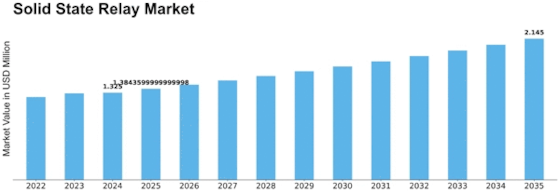
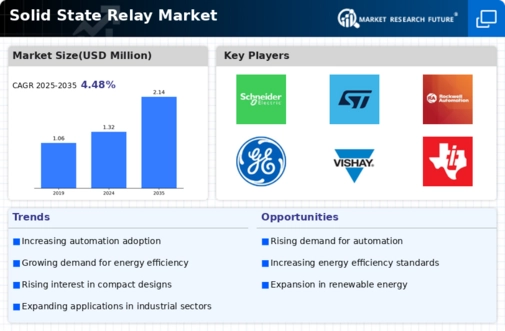
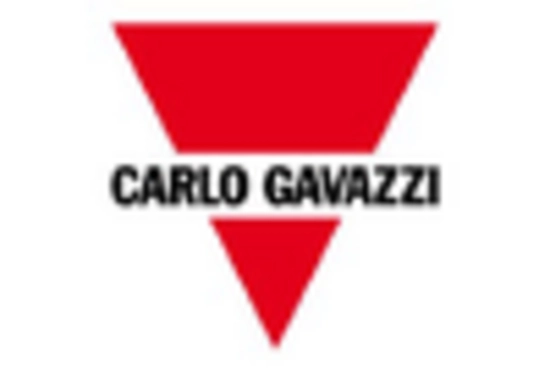
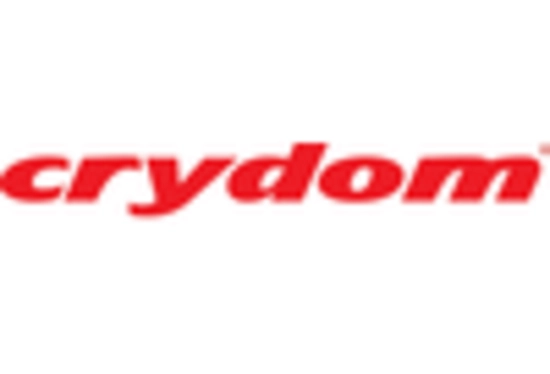
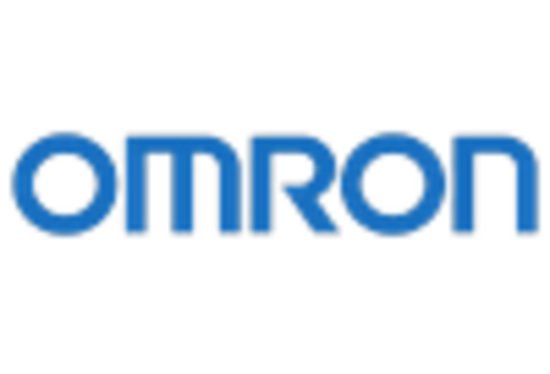
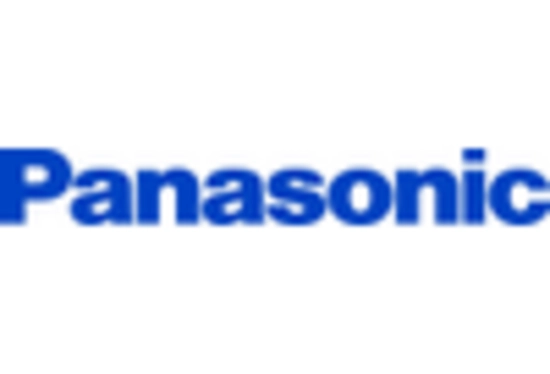



Leave a Comment